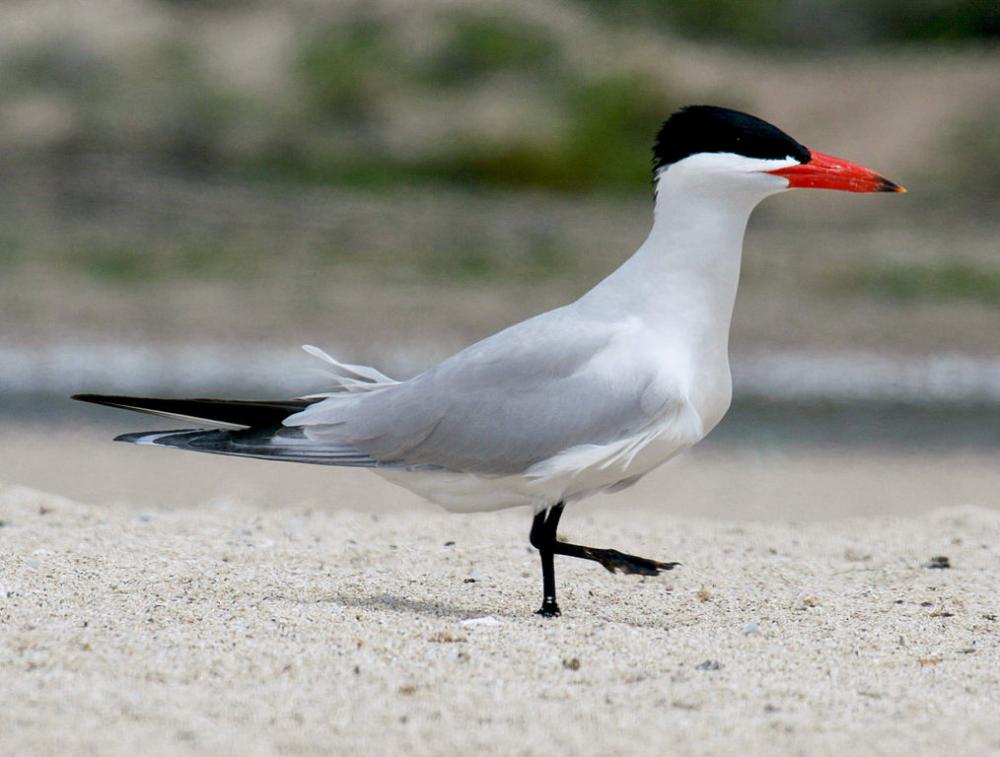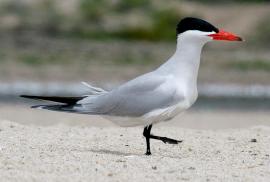Guide to Boreal Birds
Overview
Much less gregarious than other terns, Caspians usually feed singly. Pairs breed by themselves or in small colonies or may attach themselves to colonies of other birds such as the Ring-billed Gull. Caspians are more predatory than most other terns, readily taking small birds or the eggs and young of other terns.
Description
19-23" (48-58 cm). The largest tern. Largely white, with black cap, slight crest, pale gray back and wings, heavy bright red bill, dusky underwing. Royal Tern similar, but has orange-red bill, more obvious crest, paler underwing; almost never seen away from coast.
Voice
Low harsh kraa. Also a shorter kow.
Nesting
2 or 3 spotted buff eggs in a shallow depression or a well-made cup of dead grass, most often on a sandy or rocky island. Solitary or in small colonies.
Habitat
Sandy or pebbly shores of lakes and large rivers and along seacoasts.
Range/Migration
Breeds in scattered colonies from Mackenzie, Great Lakes, and Newfoundland south to Gulf Coast and Baja California. Winters north to California and North Carolina. Also breeds in Eurasia, Africa, and Australia.



